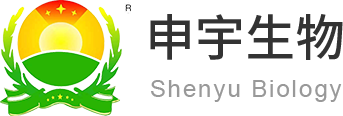Basic knowledge of definition, source and dosage form of veterinary drugs
Release time:
2024-05-28
1. what is veterinary medicine?
1. Veterinary drugs refer to substances used to treat, prevent and diagnose animal diseases, promote animal growth and reproduction, and improve production performance. Veterinary drugs are also artificially divided into animal medicine, poultry medicine, aquatic medicine, bee medicine, silkworm medicine, pet medicine, etc. In fact, many ingredients are the same, but the dosage and method of use are different. According to the direction of drug action, it is divided into disinfectants, antibacterial drugs, antiviral drugs, antiparasitic drugs, vaccines, nutritional drugs, functional regulation drugs, etc.
2. Reasonable use of poisons can also become drugs, and wrong use of drugs can also become poisons. Therefore, I often say that talking about drug toxicity without dosage and disease is misleading and playing rascal.
We know that traditional Chinese medicine aconite is poisonous, but scientific processing is a good medicine to help yang in warming and yang in returning to yang to save the enemy, and it is also often used in clinical practice. Aminoglycoside drugs are better drugs against gram-negative bacteria, but they have certain nephrotoxicity and ototoxicity. If you grasp the dose, it is very safe.
2. sources of veterinary drugs:
1. Veterinary drugs come from natural
Natural medicines mainly come from nature, or substances that can be used without processing or simple treatment, such as plant medicines (all herbs can be used as medicines: licorice, Radix Isatidis, Bupleurum, dandelion, Allium macrostemon, aloe, etc.), animal medicine (pilose antler, horn, donkey-hide gelatin, keel, turtle shell, earth dragon, centipede, silkworm slough, etc.) mineral (salt, magnesium sulfate, sodium sulfate, gypsum, sulfur, cinnabar, montmorillonite, etc.) microbial fermentation products (such as penicillin, streptomycin, etc.
2. Veterinary drugs come from artificial synthesis
At present, many drugs are synthetic, such as quinolones, sulfonamides, ethanol, formaldehyde, procaine, neostigmine, diclazuride and so on.
Veterinary drugs come from modern biotechnology
Such drugs include fermentation engineering technology, genetic engineering technology, enzyme engineering technology, cell engineering technology, etc. Veterinary clinical commonly used in vaccine production, improving animal immunity, and improving animal production and reproduction performance.
Dosage forms of 3. veterinary drugs
Veterinary drugs can be divided into raw materials and preparations. Raw materials are generally not directly used in the prevention and treatment of animal diseases. The main reason is that the raw materials are packaged in large, single form, inconvenient to use and not easy to store, so the preparation is available. Preparation is conducive to the transportation, storage, convenience and practicality of drugs. In addition, adding special excipients or synergists or adopting special processes can also improve the absorption and utilization rate of drugs and the curative effect of drugs; however, it must be admitted that veterinary drugs are the means of production and do not have too many advanced processes. Putting aside the concept of hype, the basic gap is not very big.
1. Liquid preparations
1) Liquid injection: usually we also call water injection, such as sterilized aqueous solution, suspension, emulsion, etc., mostly by injection, such as oxytetracycline injection, astragalus polysaccharide injection, ceftiofur suspension, etc.
2) solution agent: solvent for water, alcohol, oil, etc., this kind of preparation can only be oral or external use, such as neomycin sulfate solution, enrofloxacin solution, glutaraldehyde solution, hydrogen peroxide solution, liquid vitamin oil.
3) tincture and spirit: tincture is the solution of ethanol leaching of raw medicine, such as gentian tincture, tangerine peel tincture, strychnine tincture, cinnamon tincture, rhubarb tincture, iodine tincture, etc. Spirit is a volatile drug raw materials made of ethanol solution, such as camphor spirit, aromatic ammonia spirit.
4) Mixture: Mixture refers to an aqueous solution or suspension made of two or more soluble or incompatible drugs, such as compound licorice mixture, Qingji mixture, etc.
5) Traditional Chinese medicine oral liquid: also known as decoction or infusion, is mainly the solution made of traditional Chinese medicine extraction, such as Qingwen Jiedu oral liquid, Shuanghuanglian oral liquid, Maxingshigan oral liquid, etc.
6) Emulsion or linients: mainly the emulsion suspension made of drugs and oils, emulsifiers, and water, such as oil seedlings and emulsified cod liver oil. A liniation is a solution of irritating drugs with ethanol or oil, such as turpentine linients.
7) traditional Chinese medicine extract goods flow extract: mainly after the extraction of traditional Chinese medicine liquid obtained by concentration. Such as scutellaria baicalensis flow extract agent.
8) Pouring agent: also known as body surface transdermal agent, most of which are used for body surface anthelmintic administration, such as ivermectin pouring agent, Mo bacteriocin pouring agent, etc.
2. Gas preparation:
Most of the veterinary clinic is aerosol, which is not widely used, such as ivermectin spray, leprosy aerosol, povidone iodine aerosol, etc.
3. Semi-solid preparations:
1) ointment: is a drug and excipients such as vaseline, oil and other mixed made of high consistency paste dosage form, mostly external drugs such as ichthyol ointment, erythromycin ointment, ketoconazole ointment.
2) Paste: mostly oil and water-soluble solid powder mixed, powder content of more than 25%, such as zinc oxide paste, calcium hydroxide paste.
3) Licking agent: a preparation made by mixing a drug with an appropriate amount of excipients (starch, syrup, honey).
4) extract: traditional Chinese medicine oral liquid extraction and then concentrated paste, such as licorice extract.
4. Solid preparations:
1) powder injection: such as penicillin powder, ceftiofur powder.
2) Soluble powder: it is a preparation made by mixing soluble powder drugs with auxiliary materials (glucose, soluble starch, gain powder, etc.), such as doxycycline soluble powder, amoxicillin soluble powder, gentamicin sulfate soluble powder, etc.
3) Tablets: A drug or several drugs mixed with excipients for tabletting, such as praziquantel tablets, oxytetracycline tablets, licorice tablets, estralus tablets, etc.
4) Capsule: It is a solid powder or semi-solid paste or liquid into a capsule shell made of gelatin, such as cold capsules, norfloxacin capsules, etc.
5) pills: drugs are generally made into large pills, small pills, such as Niuhuang Shangqing pills, Fuzi Lizhong pills, etc.
6) microcapsule preparation: many enterprises engaged in the so-called coating preparation, such as enrofloxacin microcapsules, tilmicosin microcapsules, etc.
7) Solid ring agent or solid scratch agent: such as insect repellent collar for cats and dogs, such as cockroach repellent stick, etc.
Previous article
Related News







